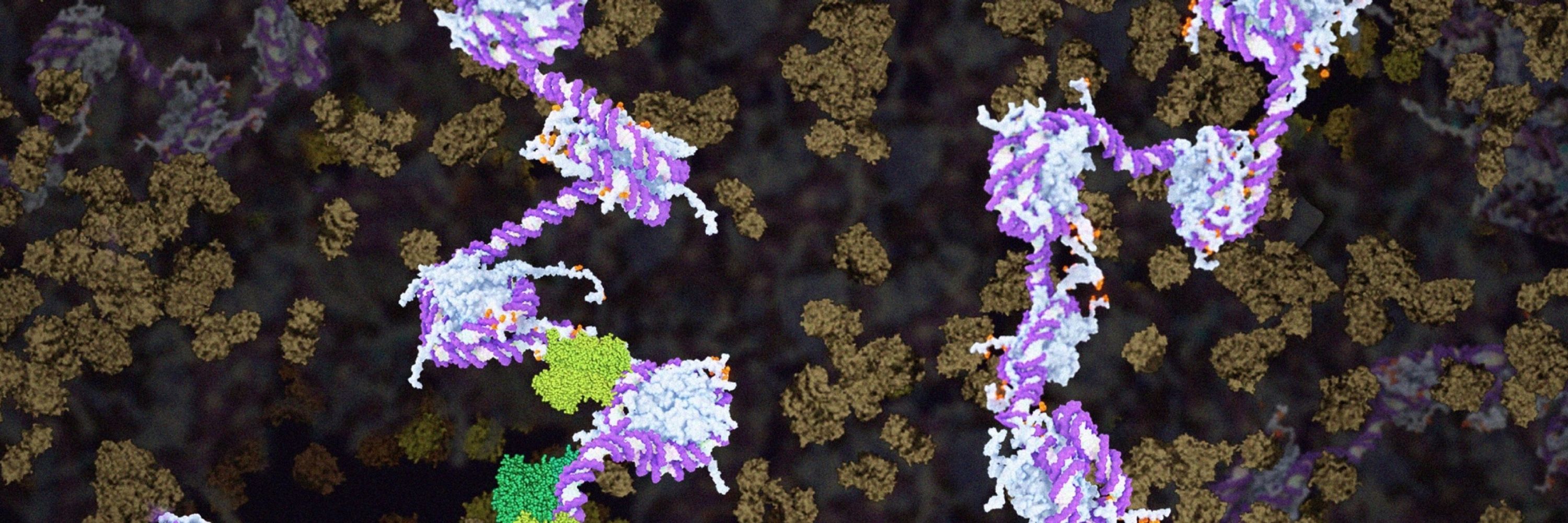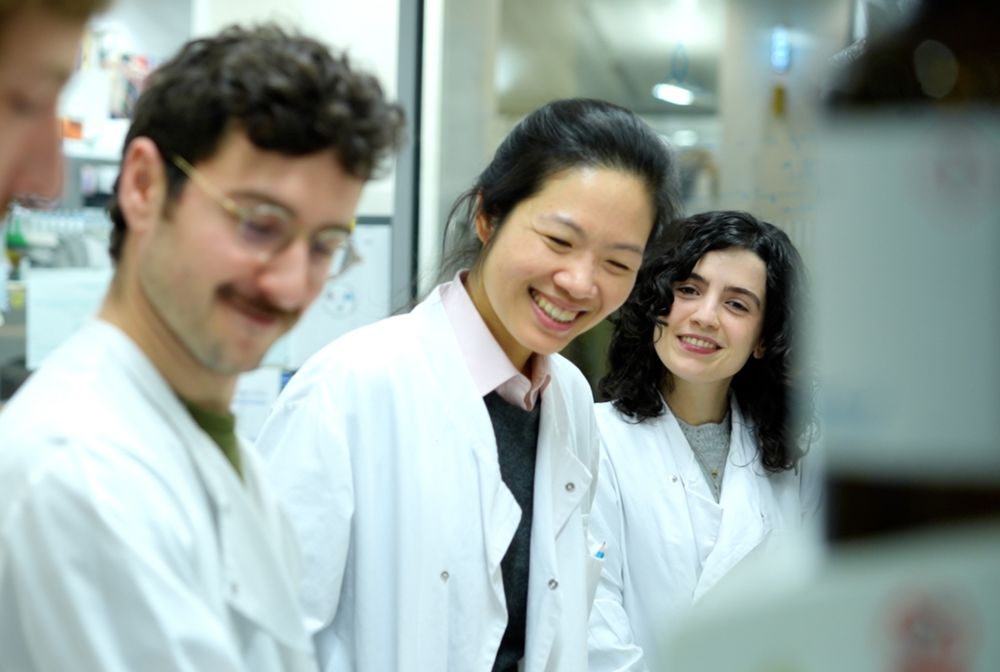

The landmark study is the first to clarify the protein's role in COVID disease in vivo.
Published in Nature Communications.
rdcu.be/ePJoA
🧵1/2

The landmark study is the first to clarify the protein's role in COVID disease in vivo.
Published in Nature Communications.
rdcu.be/ePJoA
🧵1/2
I am delighted that our paper exploring the impact of Neanderthal-derived variants on the activity of a disease-associated craniofacial enhancer has been published in Development today!
journals.biologists.com/dev/article/...

I am delighted that our paper exploring the impact of Neanderthal-derived variants on the activity of a disease-associated craniofacial enhancer has been published in Development today!
journals.biologists.com/dev/article/...
doi.org/10.1016/j.ce...
We developed a new method called MCC ultra, which allows 3D chromatin structure to be visualised with a 1 base pair pixel size.

doi.org/10.1016/j.ce...
We developed a new method called MCC ultra, which allows 3D chromatin structure to be visualised with a 1 base pair pixel size.

You were told that AEBP2 promotes PRC2 activity on chromatin.
We found the opposite: the most prevalent AEBP2 isoform inhibits PRC2 activity.
👉 surl.li/cgwqcq
A thread 🧵
You were told that AEBP2 promotes PRC2 activity on chromatin.
We found the opposite: the most prevalent AEBP2 isoform inhibits PRC2 activity.
👉 surl.li/cgwqcq
A thread 🧵
The only isoform of AEBP2 that is expressed in most cell types and tissues inhibits the chromatin-binding activity of PRC2. www.embopress.org/doi/full/10....

The only isoform of AEBP2 that is expressed in most cell types and tissues inhibits the chromatin-binding activity of PRC2. www.embopress.org/doi/full/10....
Listen here: activemotif.com/podcasts-vin...

Listen here: activemotif.com/podcasts-vin...
Join the call to release the full MRFF and support our scientists to keep saving lives.
Find out more: www.aamri.org.au/mrff
#releasethefullmrff

Join the call to release the full MRFF and support our scientists to keep saving lives.
Find out more: www.aamri.org.au/mrff
#releasethefullmrff

@nygenome
will dive deep into transcriptional insulators and the mysteries behind CTCF/Cohesin loop extrusion. Don’t miss his talk, ‘Mechanisms and Modulators of Transcriptional Insulators’ !

@nygenome
will dive deep into transcriptional insulators and the mysteries behind CTCF/Cohesin loop extrusion. Don’t miss his talk, ‘Mechanisms and Modulators of Transcriptional Insulators’ !


news.mit.edu/2025/surpris...
news.mit.edu/2025/surpris...
Compared to biorxiv, published includes new analysis from James Jusuf and Viraat Goel (from @andersshansen.bsky.social lab) on transcriptional spiking
Compared to biorxiv, published includes new analysis from James Jusuf and Viraat Goel (from @andersshansen.bsky.social lab) on transcriptional spiking
We very happy to share our latest work trying to understand enhancer-promoter compatibility.
I am very excited about the results of @blanka-majchrzycka.bsky.social, which changed the way I think about promoters
www.biorxiv.org/content/10.1...

We very happy to share our latest work trying to understand enhancer-promoter compatibility.
I am very excited about the results of @blanka-majchrzycka.bsky.social, which changed the way I think about promoters
www.biorxiv.org/content/10.1...
We very happy to share our latest work trying to understand enhancer-promoter compatibility.
I am very excited about the results of @blanka-majchrzycka.bsky.social, which changed the way I think about promoters
www.biorxiv.org/content/10.1...

If you want to learn how targeting cohesin to defined loci in the genome affects the local chromatin environment and transcription, look no further!
rdcu.be/eLiT5

If you want to learn how targeting cohesin to defined loci in the genome affects the local chromatin environment and transcription, look no further!
rdcu.be/eLiT5
www.nature.com/articles/s41...

www.nature.com/articles/s41...
We're thrilled to welcome Prof Amander Clark, a renowned stem cell biologist whose work focuses on in vitro gametogenesis and ovarian reserve formation: https://www.lornegenome.org/amander-clark

We're thrilled to welcome Prof Amander Clark, a renowned stem cell biologist whose work focuses on in vitro gametogenesis and ovarian reserve formation: https://www.lornegenome.org/amander-clark
#KSEpigenetics26 #epigenetics #chromatin #KeystoneSymposia

#KSEpigenetics26 #epigenetics #chromatin #KeystoneSymposia
- Lab set-up, research costs, salaries for up to 5 researchers
- Support for up to 12 years
- Access to our core facilities
- Competitive salary
- Fantastic colleagues
- All areas of biology
Deadline 27 Nov
www.crick.ac.uk/careers-stud...

- Lab set-up, research costs, salaries for up to 5 researchers
- Support for up to 12 years
- Access to our core facilities
- Competitive salary
- Fantastic colleagues
- All areas of biology
Deadline 27 Nov
www.crick.ac.uk/careers-stud...

We’re excited to spotlight Dr Luke Isbel, one of our inspiring career development panellists for the upcoming Australasian Epigenetics Alliance 𝐄𝐌𝐂𝐑 𝐌𝐢𝐧𝐢 𝐒𝐲𝐦𝐩𝐨𝐬𝐢𝐮𝐦!
aepia.org.au/emcr-symposium

We’re excited to spotlight Dr Luke Isbel, one of our inspiring career development panellists for the upcoming Australasian Epigenetics Alliance 𝐄𝐌𝐂𝐑 𝐌𝐢𝐧𝐢 𝐒𝐲𝐦𝐩𝐨𝐬𝐢𝐮𝐦!
aepia.org.au/emcr-symposium
Its not too late to register for the October 20-22 meeting.

Its not too late to register for the October 20-22 meeting.
www.quantamagazine.org/loops-of-dna...


